Learning Screen Conventions
All TYR screens (also called "windows") follow a pattern and design that make them easy to learn and use. There are certain buttons that appear on most screens, and the layout of many screens is the same or very similar, including the center grid that appears on several screens. Here we will discuss these conventions so you can become familar with them even before you begin to use TYR.
IMPORTANT NOTES ABOUT CLOSING TYR SCREENS:
-
To exit any screen in the application, use the "Close" button in the lower right corner and not the "X" in the upper right corner.
-
The "Close" button checks to see if you made any changes and asks if you want to save before closing.
-
If you use the "X" in the upper right corner, your changes will not be saved.
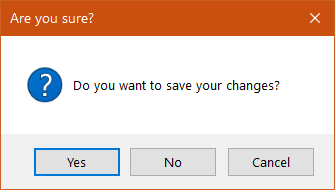
2. If you click the Close button on the Home screen while there are other open screens on which you have entered data but not saved it, one of the unsaved screens will pop up, along with this message :
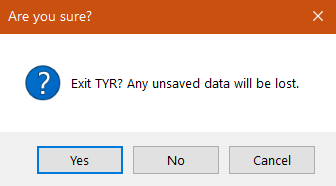

-
If you click "Yes," all screens will close, deleting any data you entered on the unsaved screens, and you will have exited TYR completely.
-
If you click "No," the message above will disappear, leaving the unsaved screen visible for you to complete.
-
This process will repeat until you have handled all unsaved screens and can safely close TYR without losing any unsaved data.
General vs Specific Screens
General screens show a list of the records related to that screen's function, and also contain several buttons that provide access to specific screens.
Example of a General Screen
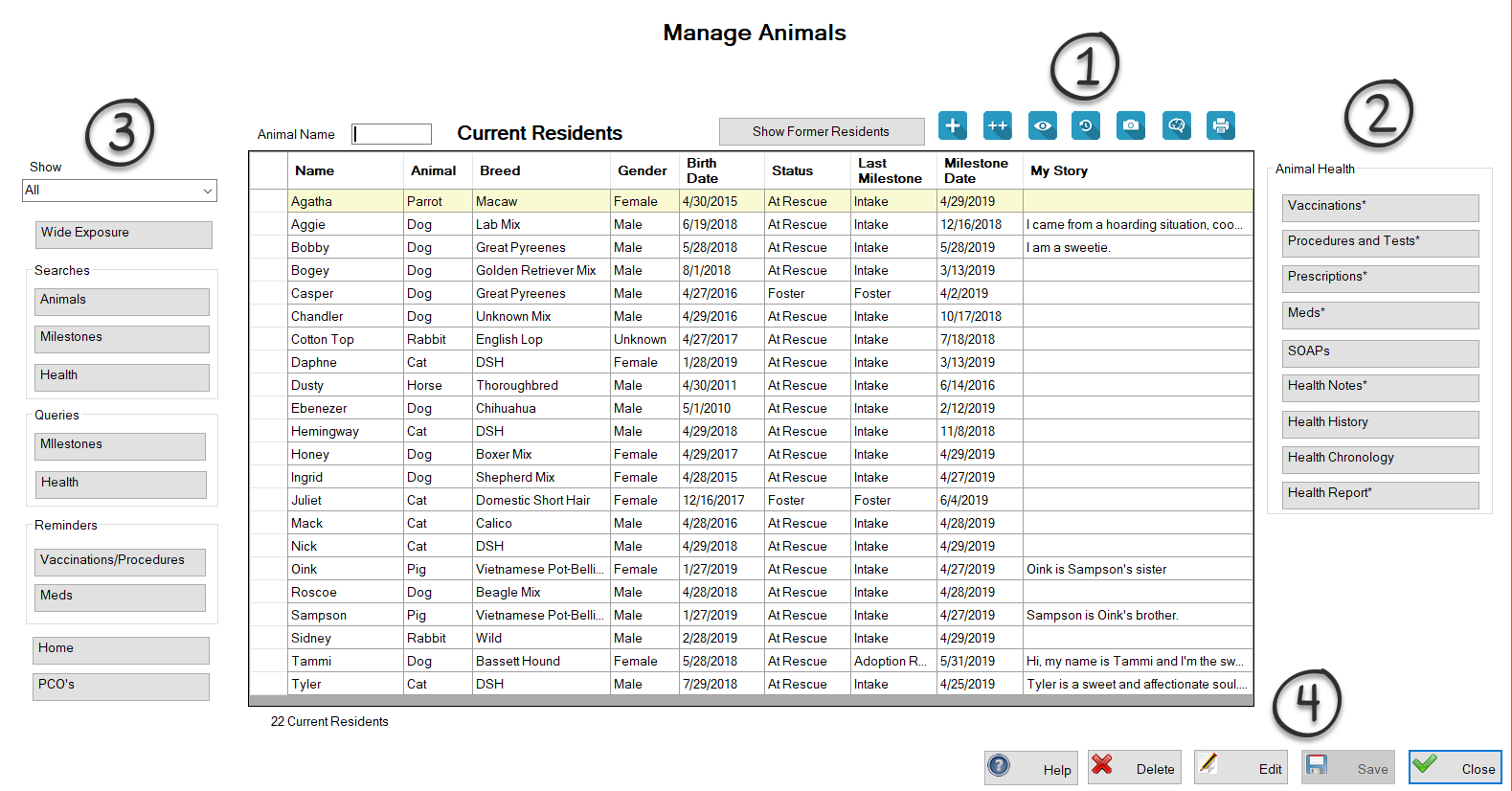
In this example, the screen contains a central grid that shows all active records related to that screen's function, in this case Animals. Surrounding the grid are buttons at the top right(1), right side (2), left side (3), and bottom right (4)
One or more of the following five buttons appear on most screens in the application. (If you can't recall what a button does, hover your cursor over it to see a brief description of its function.)
Note: The last two blue buttons to the right of the Photos and Docs button in the image above are unique to the Manage Animals screen. You can find information about those buttons here.
(2) Right Side Buttons
Buttons on the right side of the grid require a selection of at least one item in the grid. Some buttons allow selection of multiple objects and some only allow one selection. Buttons that allow the selection of more than one object have an asterisk after their names. If you select more than one item and the button does not allow it, a message to that effect will appear at the bottom left corner of the screen.
(3) Left Side Buttons
Buttons on the left side of the grid DO NOT require a selection of an item. They access queries and searches related to all the items in the grid. (Example: If you want to know how many intakes or adoptions occurred in a specific time period, click the Milestone Query Button.)
(4) Bottom Right Buttons
These buttons are on every TYR screen.
-
Help - takes you to the page in the online Help that explains the screen you are currently on.
-
Delete - deletes the selected item. When you click it, you will see a message like this one letting you know what will be deleted and giving you a chance to change your mind.
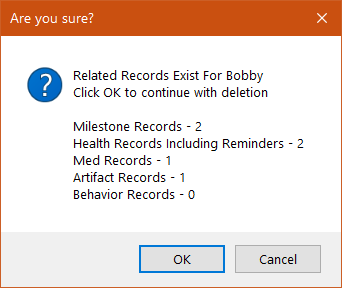
-
Edit - allows you to change information about the selected item in the grid. When you click the Edit button, a separate screen will appear in which you can make the edits.
-
Save - is enabled if the screen you are on allows you to enter or change information on that screen. Always click the Save button when you make entries and changes.
Note: Most of the time, you can also save your entries and changes by pressing your Enter key. -
Close - closes the screen.
Example of a Specfic Screen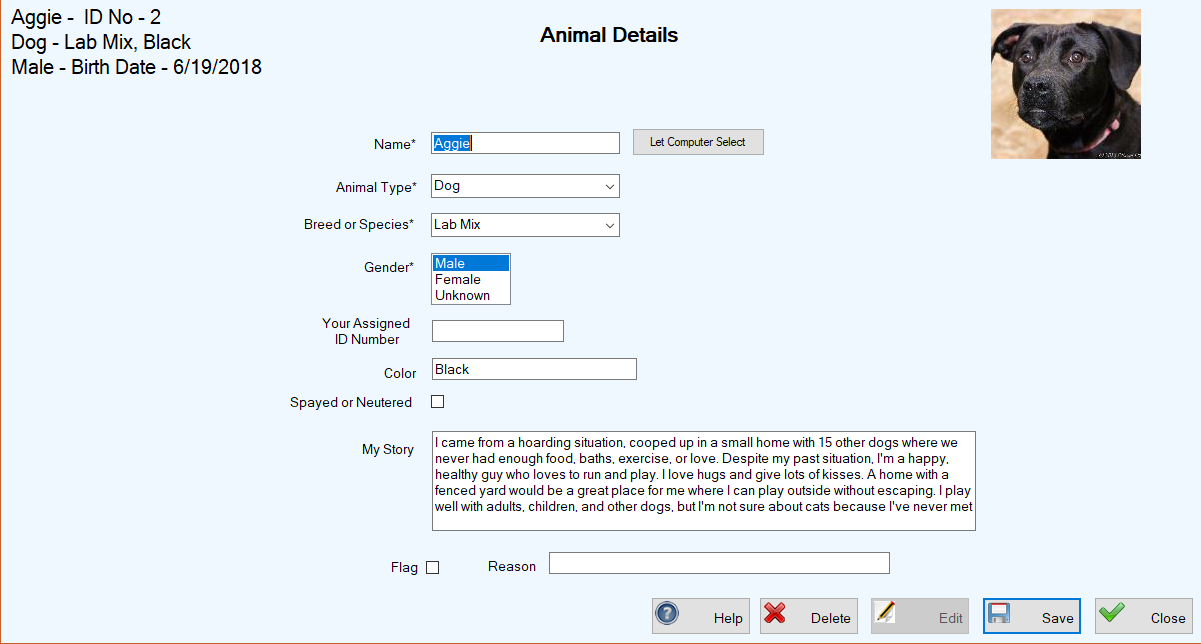
Specific screens show information in the upper left corner about the item selected in the grid on the general screen. They also display a photo (if available) in the upper right corner.
(Recall that any screen with the Photos and Docs button  allows you to upload photos. A photo can also be added when you create a new animal or new PCO record. )
allows you to upload photos. A photo can also be added when you create a new animal or new PCO record. )

Every General screen and many Specific screens have these. To view information or perform any action on an item in the grid, you must first select it.
To select a single row in the grid:
Click the blank cell to the immediate left of the item you want to select. The entire row should become highlighted. If the entire row is not highlighted in a different color, it is NOT selected.


To select multiple rows in the grid:
-
Click the blank cell to the immediate left of the uppermost item you want to select.
-
If the other items you want to select are immediately below the first selected item, hold down the Shift key on your computer keyboard and click the blank cell to the immediate left of the lowest item of all those you want to select.

-
If the other items you want to select are NOT adjacent to the first selected item, hold down the Ctrl key on your computer keyboard and click the blank cell to the immediate left each of the other items you want to select.

To select the entire grid: Double click the blank cell at the top left corner of the grid.
To sort items on the grid: Click the heading of the column to be sorted. The system sorts alphabetical items from A to Z or Z to A and numerical items from lowest to highest or highest to lowest.